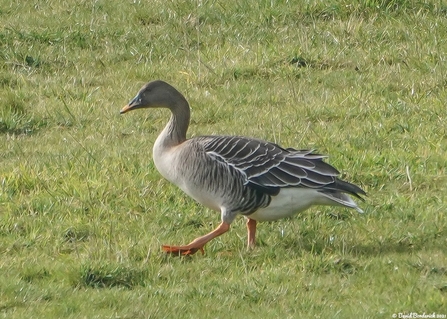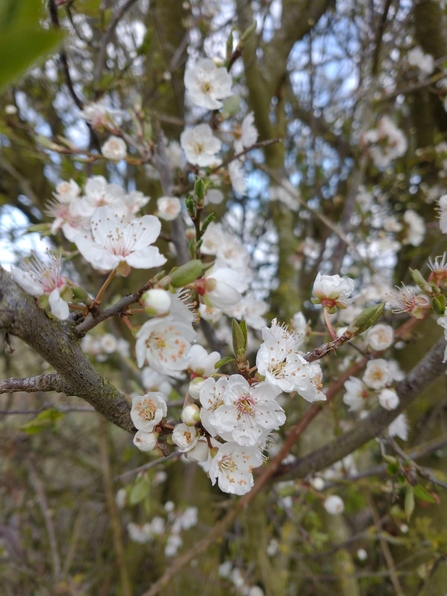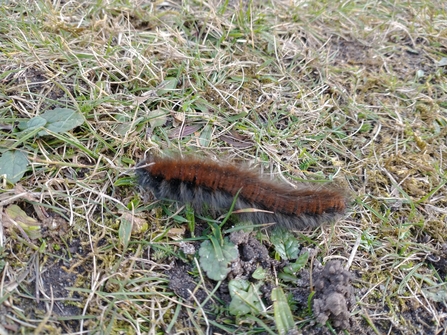Weekly wild news from our reserves, 19 March
Fox moth caterpillar - David Stansfeld
Jamie Smith, North East Suffolk Warden, was very excited to spot a rare Taiga bean goose at Hen Reedbeds this week. These geese are rare winter visitors to Suffolk, breeding in western Siberia and usually wintering in western Europe.
Also, at Carlton Marshes, Sites Manager Matt Gooch was thrilled to spot a white-tailed eagle being mobbed by a red kite. Our largest bird of prey, the white-tailed eagle is sometimes known as the 'sea eagle', and preys on fish, mammals and small birds. It was persecuted to extinction in the UK, but successfully reintroduced from Norway during the 1970s. The red kite was also once a very rare bird, but thanks to legal protection and successful reintroduction projects these wonderful birds are increasing in numbers across the UK. Rather than purely hunting for food, red kites are in fact largely scavengers, so mainly like to eat scraps and small prey like rabbits. Listen out for their ‘mewing’ calls!

Taiga bean goose at Hen Reedbeds - David Borderick
Flowering fens
Debs Crawford, Valley Fens Assistant Warden sent in this array of flowering plants from the Valley Fen reserves this week. They include chickweed, dog-violet and lesser celandine.
Chiffchaff calling at Church Farm
Jamie Smith recorded the distinctive call of the chiffchaff at Church Farm this week. Some chiffchaffs stay all year-round, but most migrate here from Africa in early spring.
Emerging woodland plants
Alex Lack, Assistant Woodlands Warden, captured three ancient woodland flowering species starting to put on a display at Bradfield Woods national nature reserve; wood anemone, early purple orchid and oxlip (on the cusp of flowering).
Preparations for livestock
Jamie Smith has been carrying out minor fence repairs at Darsham Marshes and installing new fencing at Oulton Marshes ahead of livestock returning to graze.
Spring has sprung at Martins’ Meadows
One of our brilliant volunteers, Glyn, laid this hedge at Martin’s Meadows this week. Hedge laying involves partially cutting into and bending over the main hedge stems at ground level, which encourages the trees to regenerate, thus extending the life of the hedge. The reserve is looking glorious bursting with spring colours!
Wild plum
Plum is a small broadleaf, deciduous tree or sometimes a shrub, with dark-brown bark. The branches grow straight, and twigs are often spiny in wild plants. Plum is a foodplant for a large number of butterflies and moths, and its flowers attract many pollinating insects. The fruit is also a food source for birds and mammals. It's thought that plums originated from a hybrid between blackthorn (P. spinosa) and cherry plum (P. cerasifera).

Wild plum at Knettishall Heath - David Stansfeld
Furry fox
Assistant Warden David Stansfeld spotted this fox moth caterpillar writhing its way across Knettishall Heath this week. David said ‘The large, hairy larvae can be seen on heathland, downland and coastal grassland. Fully grown caterpillars are up to 7cm in length. They have long brown hairs on the sides of the body and shorter dark orange hairs on the upper surface. Young caterpillars are darker brown with light orange bands along the body. The caterpillars hibernate fully grown and emerge to bask in the spring sunshine before pupating in April.’

Fox moth caterpillar - David Stansfeld














